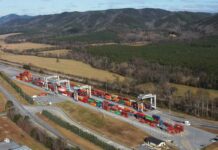
The Northwest Seaport Alliance (NWSA) is embarking on a feasibility study aimed at assessing potential business prospects within the offshore wind supply chain.
The objective is to aid the NWSA in positioning itself as a key player in supporting the growing offshore wind (OSW) supply chain market.
“With attention and recent funding from the State Legislature, now is the perfect time to evaluate potential business opportunities. This assessment is the first step in ensuring the NWSA is equipped to meet future market needs in the OSW supply chain,” stated Kristin Ang, port of Tacoma president and NWSA Co-chair.
With the Biden administration targeting 30 gigawatts (GW) of offshore wind power by 2030 and an ambitious goal of 110 GW by 2050, the study will focus on determining how the gateway can best facilitate these objectives.
Industry analyses suggest that approximately US$36 billion in domestic port infrastructure development will be required to meet the supply chain demands of current federal offshore wind targets.
Recognizing the crucial role of port infrastructure and capacity in the OSW supply chain, considerable market interest and investment opportunities are emerging for ports across the United States.
The Washington State Legislature acknowledges the potential economic benefits for Washington by investing in initial programs and fostering collaboration to comprehend the statewide possibilities within the OSW market.
According to a statement, the study will encompass an extensive examination of NWSA facilities, assessing the compatibility of different components of the offshore wind (OSW) supply chain with these facilities. It will pinpoint which port facilities are best suited for accommodating various aspects of the OSW supply chain. Furthermore, the study will emphasize investment opportunities in NWSA facilities aimed at aligning with market demand.
“Offshore wind components are large, heavy elements that require purpose-built port infrastructure, heavy-lift equipment, and access to deep, navigable water. The NWSA is well positioned to play a critical role in the development of the OSW supply chain as there is a shortage of suitable port infrastructure on the West Coast to meet renewable energy and OSW deployment goals at the federal and state levels,” added Shane Phillips, senior Civil and Coastal engineer at Moffatt & Nichol.





